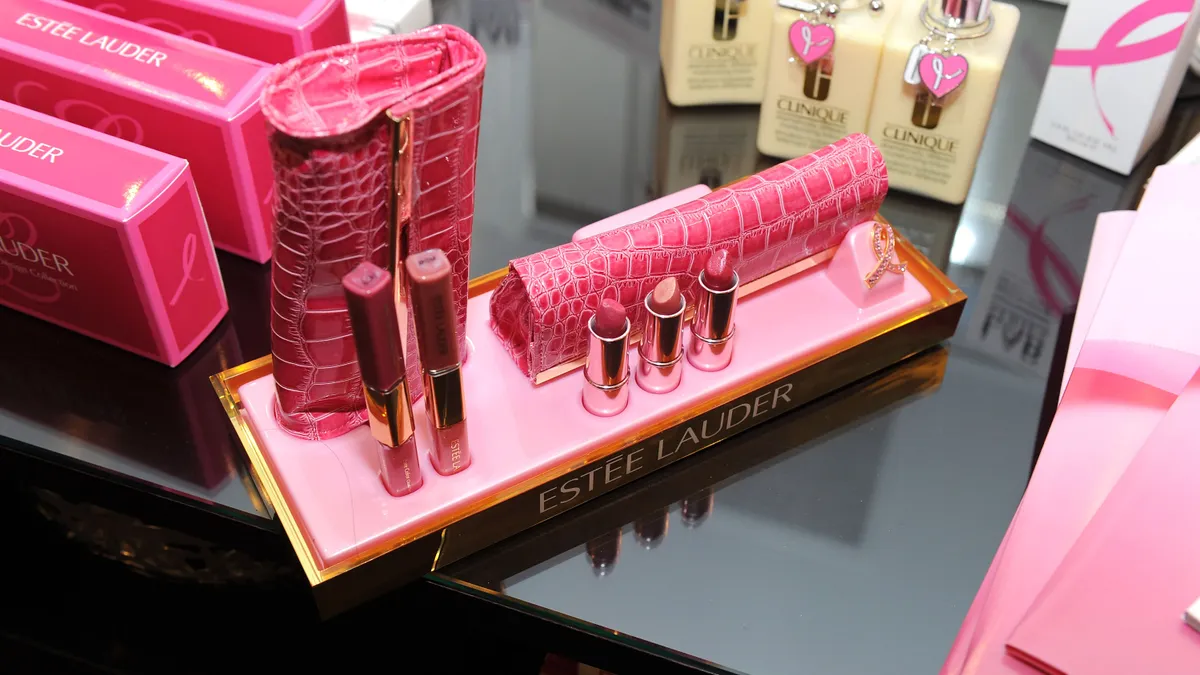PALM SPRINGS — The Estée Lauder Companies may count several billion-dollar brands, including Clinique, MAC Cosmetics and La Mer, among its portfolio, but it isn’t immune to efforts to better balance brand building with performance marketing after a yearslong, adland-wide swing toward the latter.
"As we all know, CMOs are debating [brand-building] spend versus performance marketing, so … we came up with a multi-stage approach to measure brand equity spend in the upper and middle funnel and performance marketing in the bottom of the funnel — all within one ecosystem," said Doug Jensen, the company's senior vice president of go-to-market analytics and activation.
That approach, which relies on a commitment to brand equity marketing and marketing mix modeling (MMM), was the subject of Jensen's keynote presentation during the eTail Palm Springs conference on Feb. 27.
For the cosmetics marketer, understanding the impact of its marketing efforts on the various parts of the sales funnel is based on a handful of priorities, including determining which efforts drive desirability and knowing how upper-funnel tactics cascade down, how digital and e-commerce marketing drive upper funnel and how brand-specific websites drive consumers to brick and mortar locations.
About a decade ago, 90% of Estée Lauder's marketing spend was in traditional channels like paid media, editorial and public relations. Today, 90% of spend is in digital channels around owned brand assets, retail assets and creators, whether cultivating authentic relationships, partnering with influencers or collaborating with creators on product ideation. Estée Lauder works with creators across the skincare and makeup categories, from TikTok-based dermatologists ("DermTok") to influencers and celebrities with followings ranging from the hundreds of thousands to the millions.
In one example, a creator's video about Dr. Jart's Cicapair product went viral without any involvement from the brand, notching 40 million views and producing sales. To build on that viral success, Estée Lauder licensed the creator's content as an asset for its own channels and boosted it through paid media, hiring another creator to record similar content with a "back in stock" strategy.
"Virality will happen to anyone — you can't plan for it — but when it happens, take quick action, license the content and then build 360-degree marketing around it, making sure that you're using CRM to retain consumers," Jensen advised.
Marketing mix modeling makes a comeback
To better understand the impact of its marketing, Estée Lauder has turned to MMM, a decades-old approach to statistical analysis that could be making a comeback as advertisers deal with signal loss from Apple's privacy changes and Google's deprecation of third-party cookies, which finally kicked off this year.
"Any user-level measurement approach will be very hindered. You can't watch the consumers across different platforms, and MMM uses aggregated data using statistical models," explained Jensen, a statistician by training.
Estée Lauder's MMM ecosystem analyzes various marketing factors, from media and CRM to promotions and beauty advisors, with models based on specific key performance indicators (KPIs). As examples, the marketer uses Google query volume as a KPI to measure brand desirability at the top of the funnel, while focusing on brand site traffic in the middle of the funnel to measure consideration.
Beyond seeing the impact of each part of the funnel, Estée Lauder's model allows the marketer to see the cascading effects of each tactic through the funnel, as the models are in communication with each other.
"That nested ecosystem has been transformational for us," the executive said.
The methodology allows marketers throughout the company to simulate budgets with different priorities, giving them the flexibility to change where in the funnel they want to spend their marketing funds. That ability is then scaled throughout the annual budget process for the entire company, giving marketers straightforward guidance about which tactics to prioritize for the best return on investment.
To the retailers and marketers in the room at eTail, Jensen suggested working with their agencies to create MMMs and help the technique become popular once again. At Estée Lauder, Jensen and his team's approach has C-suite endorsement, and the results are helping the model expand beyond his team's budget constraints.
"What we're doing now is moving [modeling] from my budget to all of the brands' budgets, and thereby getting scale," the executive said. "Because when the brands see the power of what we can do, they all want to sign up for this research.”























